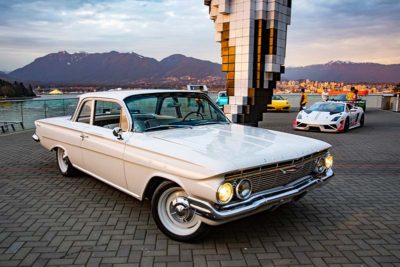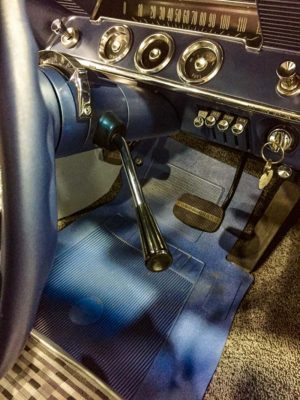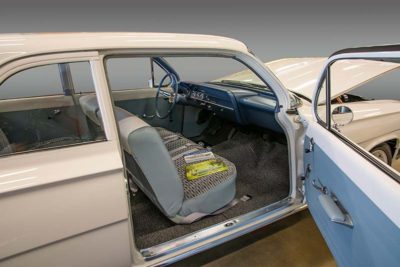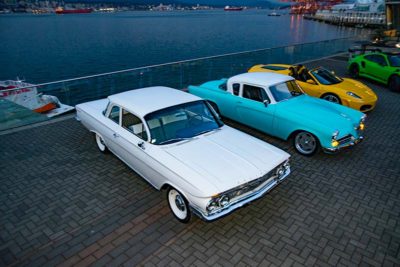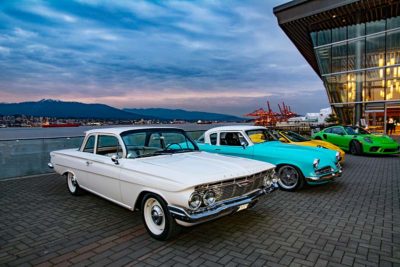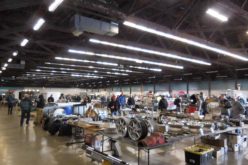Sleeper by Design: 1961 Chevrolet Biscayne
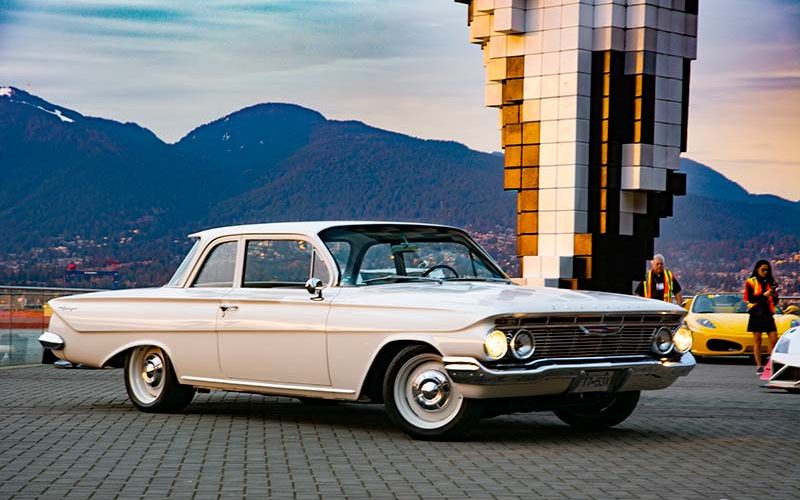

It can be argued that lots of good can come from adversity, and certainly having your tail whipped when you think you have the baddest car around, can provide stump-pulling motivation. In 1969, driving a new Vette with the 427 offered one a sort of invincibility when cruising to Wally’s Burgers, a local Carnut hang out in Vancouver. One evening, a race with a 1969 Camaro left the Vette in second place and its owner with lots of questions.
It seems the Camaro owner knew which boxes to check and was driving a ZL1-powered Camaro. Not liking second place very much, a promise was made to one day own a car powered by this monstrous motor! Fast forward to 2008, and GM mysteriously finds the signature aluminum block’s tooling that was discarded after production was halted in the early ’70s. GM Performance Parts was tasked with refurbishment, and two versions of the ZL-1 were released. The first of only 427 all-aluminum engines showed up at GM dealers and authorized GM Performance Parts retailers. The copy of the anniversary ZL1 came with certificate of authenticity, and an engine plate with specifications. A less-expensive version came with a cast iron block and is called the ZZ427 crate engine.
Snatching one of these new anniversary motors was only part of the deal, and the hunt was on for a suitable Chevy to stuff it into. With a budget that could easily buy any of the coolest cars from Ferrari, a bit of nostalgia tugged at the heartstrings when a 1961 white Biscayne like his dad drove was found online. At first glance, because of its recent restoration, it was too good to resto mod it….but soon, it was evident the restoration clearly was not up to today’s standards.

After begging, only Schwartz Performance would create a version of their G-Machine Chassis using the 12-bolt Chevy rear-end with full floating axles. This frame called for a new floor pan with considerable modification to house the perimeter frame that replaced the wishful thinking of the standard x-frame. The rockers needed to be widened into the passenger compartment to house the outside 2×4-in. frame rails. The chassis is set up to turn 1.06 g on the skidpad and had dual adjustable shocks. Although the shocks are adjustable, the use of race car spherical bushings instead of urethane bushings means this car has either a race car-type ride, or a firmer race car-type ride.
The mission was to keep the stock look of the car until the hood was opened and one gazes upon the all aluminum 427 ZL1 and the massive Monte Carlo bar. Multiple pieces of tubular steel are welded together and bolted to secure points on the frame and body to aid in keeping the frame and chassis as stiff as possible to help with handling. This frame was more suited to a trunk mounted fuel cell than the stock 1961 underslung affair. But the look of the original tank was more important, so the massive rear sway bar had to be rerouted through channels cut and welded through the frame rails. This leaves the inside of the trunk absolutely stock looking.

The “GO” is supplied by the previously mentioned ZL1 and churned through a 6-speed automatic transmission. Anyone familiar with the new Camaro’s 6-speed, they know of its hefty girth. Cutting and enlarging the transmission hump was not in the cards, so the car had to have a 6-speed that looks like a smaller 4-speed automatic tranny.
Luckily, the brains at Jellybean did not have to get overstressed, as TCI puts out a tranny filling this need perfectly. But the Jellybean boys came up with a neat way of using the Column Shifter transmission selector as a paddle-type shifter. When in “D” for Drive, it shifts as any normal automatic transmission would, but when dropped in to “L” for Lunatic, this bad boy can mix it up with any Lambo or Ferrari as you push away for a higher gear and grab towards you for a lower gear. A description of micro switches and springs is available for anyone wanting to fall asleep….but it works perfectly as it should and is fully electronically programmable.
Regarding the electronics of many Pro-Touring cars, this car breaks the mould by using a factory NOS wiring harness without using tricked-out electric windows or door locks. The seat is still manual and the only tricks to the electrics is an electronic ignition with the modern parts hidden, and the stock-appearing period-correct generator is actually an alternator.
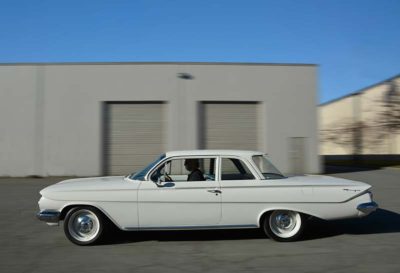
The paint was the exact original Ermine White done in modern base clear, and the bumpers are from the previous restoration. Although the car was a complete car when started, some of the parts were not suitable to re-use. It would seem that using only four taillights on the Biscayne instead of six on the Belair would save a pocketful of cash….but Biscayne parts are so rare.
The Easter egg hunt for parts took a few years, and some of the hardest parts to find were a right front fender and rad support, NOS hood hinges, headlight bezels, NOS rocker mouldings, front fender extensions, interior package tray, and twin-snorkel air cleaner. After scouring North America, they had to make the little clips that hold on the rain gutters at the A-pillar. Jellybean fabricated them before actually finding a set online.
The weight savings and simplicity of four taillights instead of six seems to make the rear end so light, the tires often have trouble gripping. But when she hooks up, look out, because the car is not heading to piano lessons! The car gets regularly driven and is as faithfully a sleeper as anyone could ever dream of….but don’t try your luck, unless you want to start your own hunt for a ZL1.











